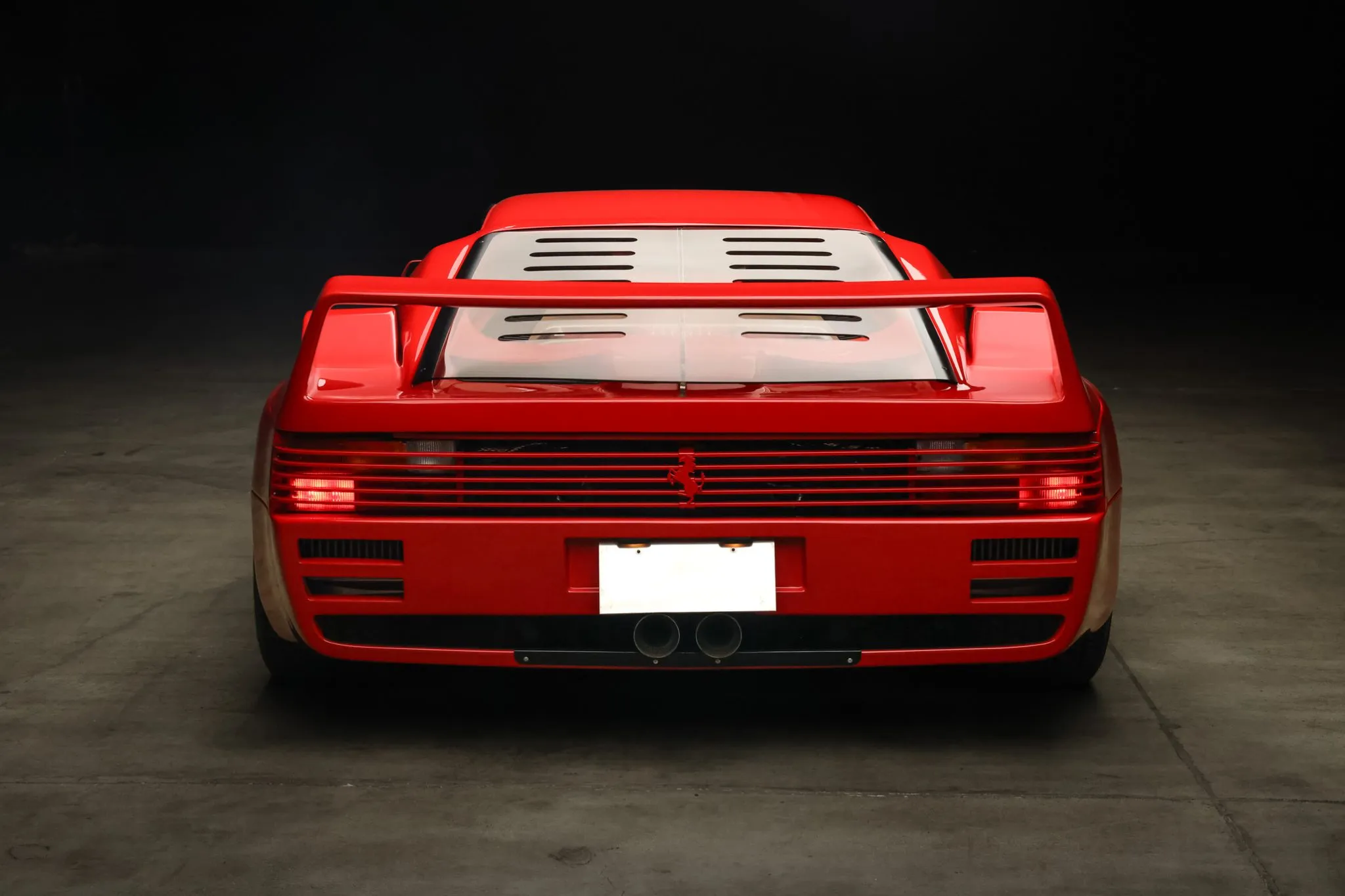Sold for $525,000 on Bring a Trailer.
This 1985 Ferrari Testarossa was delivered new in Germany and modified by Koenig Specials in 1986 with their Competition Evolution II conversion, which included installation of revised bodywork along with a KCE 1000 Turbotronic twin-turbo kit. The car subsequently spent time with a second owner in Germany prior to being relocated to Japan, where it remained with its third owner until 2009 before being acquired by the selling dealer’s client and brought to the US in 2023. The modified Koenig Specials bodywork incorporates updated fascias, vented fenders, side air intakes, and a raised rear wing along with fixed headlights, louvered taillights, and a plexiglass engine cover. Inside, power-adjustable bucket seats trimmed in red leather are accompanied by Schroth four-point harnesses along with a MOMO steering wheel, Koenig-branded instrumentation, a boost-control dial, and a custom stereo. The 4.9L F113A flat-12 is fitted with twin KKK turbochargers, side-mounted intercoolers, a MoTeC engine management system, and a center-exit exhaust system. Shifting is through a five-speed manual transaxle with a limited-slip differential, and further equipment includes Koni shocks, H&R springs, AP Racing disc brakes, and 17″ multi-piece alloy wheels. A timing belt service is said to have been performed in preparation for the sale, and the car now shows 17k kilometers (~11k miles). This Koenig Specials–modified Testarossa is offered on dealer consignment in California with a clean Montana title.
Koenig Specials is a German tuning company that was founded by privateer racer Willy König in 1977 in Munich, West Germany. The company began by modifying contemporary Ferrari Berlinetta Boxer models before turning their attention to the Testarossa upon its release in 1984. Following the debut of a Koenig Specials–modified Testarossa at the 1985 Frankfurt Motor Show, the company would go on to offer various upgrade packages for the car including their Competition, Competition Cabrio, and Competition Evolution conversions.
A later Competition Evolution II example, this car is finished in red and features revised fascias, vented fenders, side air intakes, a plexiglass engine cover, and a raised rear wing. Fixed headlights are paired with louvered taillights, and dual polished central exhaust outlets exit from the bodywork at the rear. A Koenig Specials decal is affixed to the windshield, while Koenig Turbo graphics appear ahead of the rear wheels.
The 17″ multi-piece wheels feature gold centers and are mounted with 235/45 Michelin Pilot Sport 4 tires up front and 335/35 Pirelli P-Zero Asimmetrico rubber out back. The car rides on Koni shocks fitted with H&R springs, and braking is handled by AP Racing calipers over two-piece slotted rotors at all four corners.
The power-adjustable bucket seats are trimmed in red leather, which extends to the dash, center console, and doors. The seats are accompanied by Koenig-branded Schroth four-point harnesses as well as retractable three-point seatbelts. A Sony AM/FM cassette stereo is connected to Quart speakers, and further appointments include a digital clock, a defroster, and power windows.
The leather-wrapped MOMO steering wheel is paired with a gated dogleg shifter and frames Koenig-branded instrumentation including a 360-km/h speedometer and a 10k-rpm tachometer flanked by oil and boost pressure gauges. A MoTec C125 digital display is located atop the center stack, which also houses a six-digit Veglia Borletti mechanical odometer that indicates 17k kilometers (~11k miles) on this 1985 Ferrari Testarossa Koenig Specials Competition Evolution II.
The mid-mounted 4.9L F113A flat-12 was fitted with a Koenig Specials KCE 1000 Turbotronic kit in 1986, according to the selling dealer. Koenig Specials rated the engine for 1,000PS in Evolution trim. The engine is equipped with twin KKK turbochargers, side-mounted intercoolers, oil coolers, Turbosmart external wastegates, a MoTeC engine management system, and a modified center-exit exhaust system.
Power is sent to the rear wheels through a five-speed manual transaxle and a limited-slip differential.













